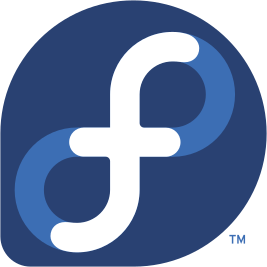More actions
m (Update infoboxes) |
(Link to existing DE pages) |
||
| Line 6: | Line 6: | ||
|releasemodel=Semi-Rolling Release | |releasemodel=Semi-Rolling Release | ||
|packagemanager=[[dnf]] | |packagemanager=[[dnf]] | ||
|defaultdesktops = Budgie, Cinnamon, i3, Sway, GNOME, KDE Plasma, LXDE, LXQt, MATE, Xfce | |defaultdesktops = Budgie, Cinnamon, [[i3]], Sway, GNOME, [[KDE Plasma]], LXDE, LXQt, MATE, Xfce | ||
|usagetype=Desktop, Server, Cloud | |usagetype=Desktop, Server, Cloud | ||
|architectures = aarch64, x86_64 | |architectures = aarch64, x86_64 | ||
Revision as of 15:02, 6 June 2024
 The Fedora Linux logo | |
| Release Status | Maintained |
|---|---|
| Release Model | Semi-Rolling Release |
| Package Manager | dnf |
| Default Desktops | Budgie, Cinnamon, i3, Sway, GNOME, KDE Plasma, LXDE, LXQt, MATE, Xfce |
| Usage Type | Desktop, Server, Cloud |
| Architectures | aarch64, x86_64 |
| Website | fedoraproject.org |
Fedora Linux is an independent Linux distribution[1], developed by the Fedora Project and its volunteers. Fedora Project was formed in 2003 by Red Hat[2], after the decision of splitting Red Hat Linux into an enterprise model operating system called Red Hat Enterprise Linux (RHEL) and a community based operating system, known as Fedora Linux. The first version of Fedora, called Fedora Core 1 was released on November 6, 2003[3]. Fedora Linux is built with the vision "where everyone benefits from free and open source software built by inclusive, welcoming, and open-minded communities."[4]
History
Fedora Linux is one of the two distributions, the other being Red Hat Enterprise Linux (RHEL), that emerged from its predecessor Red Hat Linux. It serves as an upstream for the latter.[5]
- ↑ https://fedoraproject.org/wiki/FAQ#Is_the_Fedora_Project_independent_of_Red_Hat.2C_Inc..3F
- ↑ https://web.archive.org/web/20031001204515/http://www.fedora.us/
- ↑ https://web.archive.org/web/20201129041529/https://www.redhat.com/archives/fedora-announce-list/2003-November/msg00000.html
- ↑ https://docs.fedoraproject.org/en-US/project/#_our_vision
- ↑ https://docs.fedoraproject.org/en-US/quick-docs/fedora-and-red-hat-enterprise-linux/#_relationship_between_fedora_and_rhel
